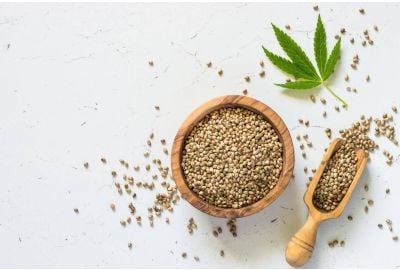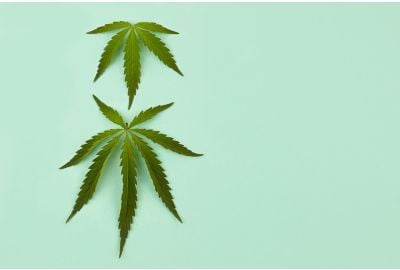Everything You Should Know About The Weed Leaf
Every marijuana consumer is familiar with the iconic weed leaf. Cultures throughout history used it long before modern society as a symbol of peace and wisdom. For example, the Egyptian goddess Seshat has been described as "she of the seven points", which is quite clearly a reference to the marijuana leaf.
Like most plant species, cannabis has very specific leaf shapes. However, it's easily recognizable because of the uneven number of blades. The pot leaf also has a unique hand-like structure. To learn everything about cannabis leaves, let's look at the uses and the types of leaves you find.

What are the main types of marijuana leaves?
Although you can find various types of weed leaves, they generally follow the same pattern. For example, some weed strains have 9 or 13 leaves, but that doesn't occur often. Leaves are usually 3, 5, or 7-bladed, while even-numbered leaves are extremely rare.
As there are three main types of cannabis, you find three main types of weed leaf variations. Cannabis leaves look quite different from one strain to another and are therefore quite easy to distinguish. Most difficulties in identifying weed by its leaves occur in hybrids as they have traits from both parents.
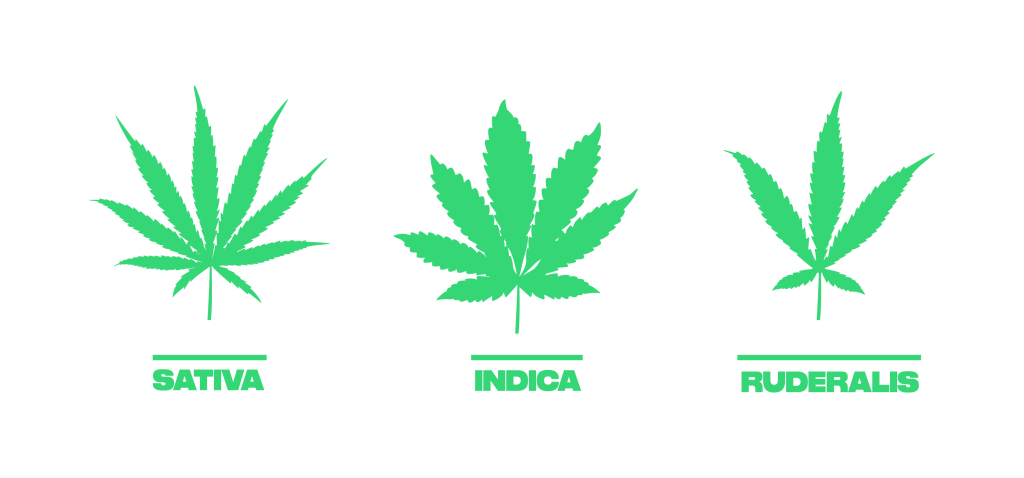
Sativa leaf
Sativa strain marijuana leaves typically have up to 13 blades. As with other strains, they'll rarely display leaves with even-numbered blades. There's a bit of a myth that finding an even-numbered weed leaf is good luck.
Sativa cannabis leaves are long and slender with serrated edges. Typically, their foliage is quite sparse, allowing good airflow. Sativa strains are generally very tall, reaching up to 7 feet in many cases.
Depending on which version you're cultivating, sativa marijuana leaves can range from very bright green to a darker forest green. Their buds display similar traits, often being light-colored and fluffy. Don't let their delicate appearance fool you. They're extremely robust plants with a potent kick.
Male and female cannabis plants share a similar leaf structure and growth pattern. Their main difference is visible after about six weeks. Females create little hair-like pre-flowers at the joints of the sativa leaf, while males don’t.
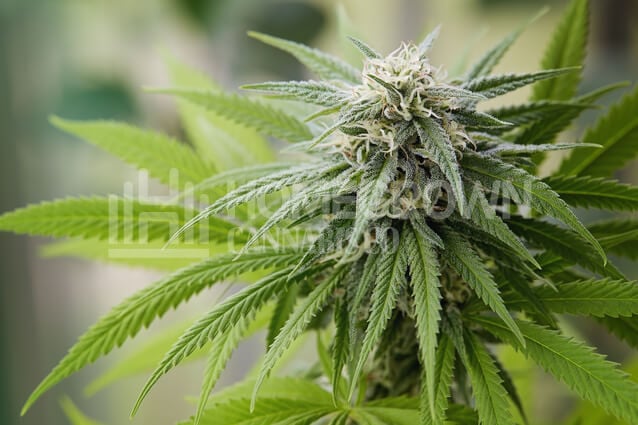
Indica leaf
The cannabis indica leaf is similar to the sativa in its general structure and also has jagged borders. Indica leaves are 5, 7, or 9-bladed, with very few strains having more than 13. Cross-breeds or hybrids often have mixed traits, leading to some interesting variations.
Indica plants are quite an insect-resistant strain but easy targets for fungi and mildew. Their thick, tough leaves are difficult for bugs to eat, but their foliar density can block moisture. Therefore, cultivators should always have additional ventilation for indica strains in indoor and greenhouse environments.
Instead of being long and slender, indica weed leaves are stubby and wider. Their foliage is also denser than that of Sativa, which can make them more susceptible to mold. Ideally, cultivators should trim some of the central leaves away to increase airflow.
The color of indica pot leaves is darker than that of sativas. Varying degrees of olive green are typical of an indica leaf, with rare occurrences of light green. Similarly, the buds are generally darker and denser than sativa strains.

Ruderalis leaf
Ruderalis cannabis leaves are often confused with young indica or sativa strains. Depending on their origins, their foliage can be dark or light green. The key differences, however, are visible after about eight weeks.
Like indicas, ruderalis plants don't become tall, and their leaves are short and broad. However, ruderalis weed leaves aren't as densely packed as indica strains. Their color spectrum also varies greatly, with some displaying bright green fan leaves.
Sativa and indica share more similarities in their bud production than their weed leaves. Ruderalis mostly have fluffy buds but don't produce as much resin as a sativa. Most of the time, it's because of their environment.
The similarities cause botanists to debate D.E. Janischevskys' discovery of the ruderalis cannabis strain to this day. They have between 5 and 13 blades per pot leaf, ranging from light to dark green. Rederalis' main benefits are that it's fast-growing and has autoflowering abilities.
Cultivators can exploit ruderalis autoflowering genetics in indoor and greenhouse setups to increase yields and potency. Being auto-flowering, they're not dependant on sunlight to switch into their flowering phase.
Increasing the light and food available for a ruderalis plant means growers don't have to worry about accidentally pushing their plants back into the vegetative stage.
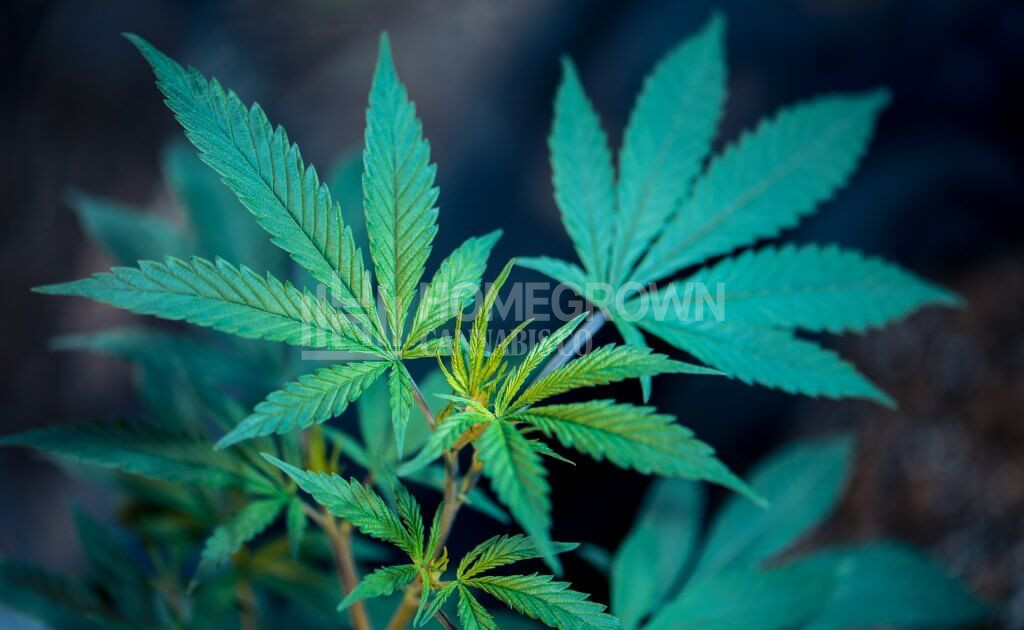
Are there any wild weed leaf variations?
Technically speaking, ruderalis strains are variants of wild marijuana types. That doesn't mean you don't find wild pot leaf variations. It only means you don't find as many as domesticated cannabis strains. These marijuana leaves look nearly indistinguishable from other strains.
Cannabis is quite literally a weed that's native to East European and Asian countries. Its natural environment allows marijuana to grow incredibly well, sometimes becoming a pest on agricultural farms. It grows to about 2 or 3 feet tall in the wild and has a set flowering period depending on the environment. Wild cannabis leaves range between 5-bladed to 13-bladed variations.
Unlike cows and pigs, marijuana hasn't changed much from its wild ancestry. While most popular strains are hybrids, they all have wild origins visible in weed leaves. You mostly notice the difference between wild and domesticated marijuana strains in their THC levels.
Years of breeding the best strains have allowed cultivators to increase yields and potency of weed to unprecedented levels. Most wild weed leaf strains have around 2 - 8 % THC, whereas their domesticated counterpart will offer 10 - 20%. Similarly, wild weed might offer you 2 - 3 oz of bud per plant, while feminized seeds can offer up to 25 oz.
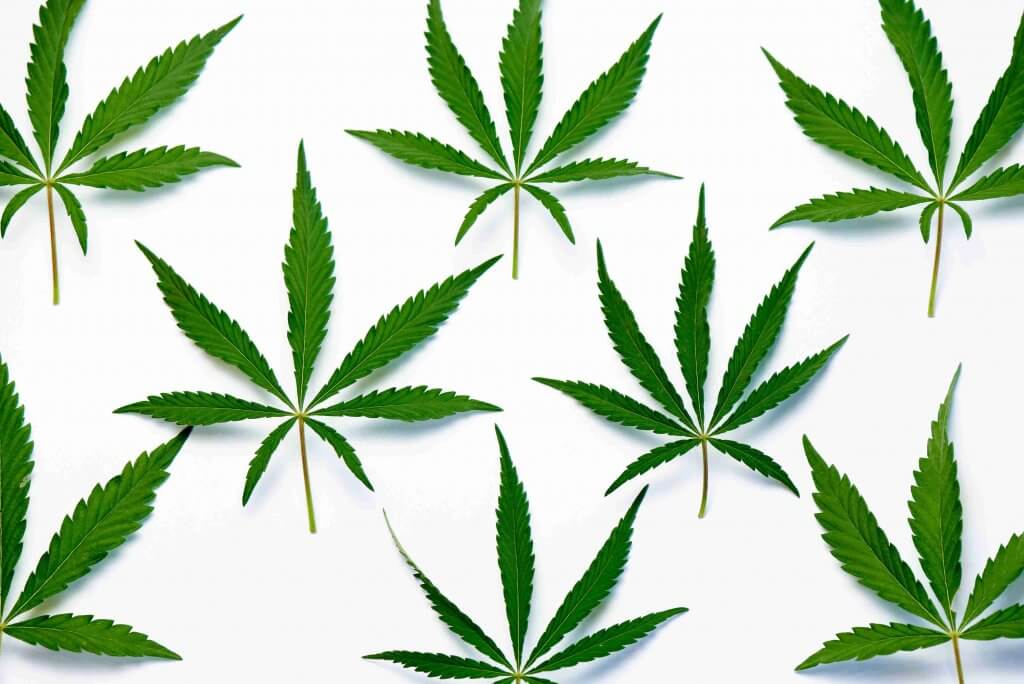
What are cannabis leaves made of?
As a basis for all life on earth, weed leaves and the rest of the plant are carbon-based entities. The structures and compositions of carbon dictate what their functions are and how they look. Similar to all animals, they breathe, eat, and, yes, even defecate. Funnily enough, oxygen is an example of waste that plants release, and we consume.
Like the human body, cannabis leaves have different parts that serve various functions. For example, the leaf blades have veins, stalks, and other internal structures that help with multiple processes. To understand the different parts of marijuana leaves and their uses, we need to look at what makes them work.
The most important part of any weed leaf is chlorophyll. It's the green chemical essential for photosynthesis in the plant. Without chlorophyll, plants are unable to convert sunlight into energy and will die as a result.
Xylem: The xylem in weed leaves pumps water and nutrients throughout the plant. Damage to the stalks creates air bubbles in the xylem that can cause blockages. If your plants have compromised xylem, they won't receive the minerals they need to survive.
Chloroplast: On a cellular level, Chloroplasts are mainly responsible for sufficient photosynthesis. They absorb and store light energy in marijuana leaves. They also convert the energy into chemical energy to create oxygen and other compounds.
Mitochondria: Mitochondria are essential to the health of all plants. By converting stored energy into chemical energy, mitochondria provide about 90% of all the plants' cells' energy. Without their presence, cannabis leaves can't survive.
What does the cannabis leaf do?
The weed leaf, like all foliage, is mainly responsible for photosynthesis. If you remove all the leaves from a plant, it's almost guaranteed to die. You can think of cannabis leaves as the lungs, stomach, and heart of the plant.
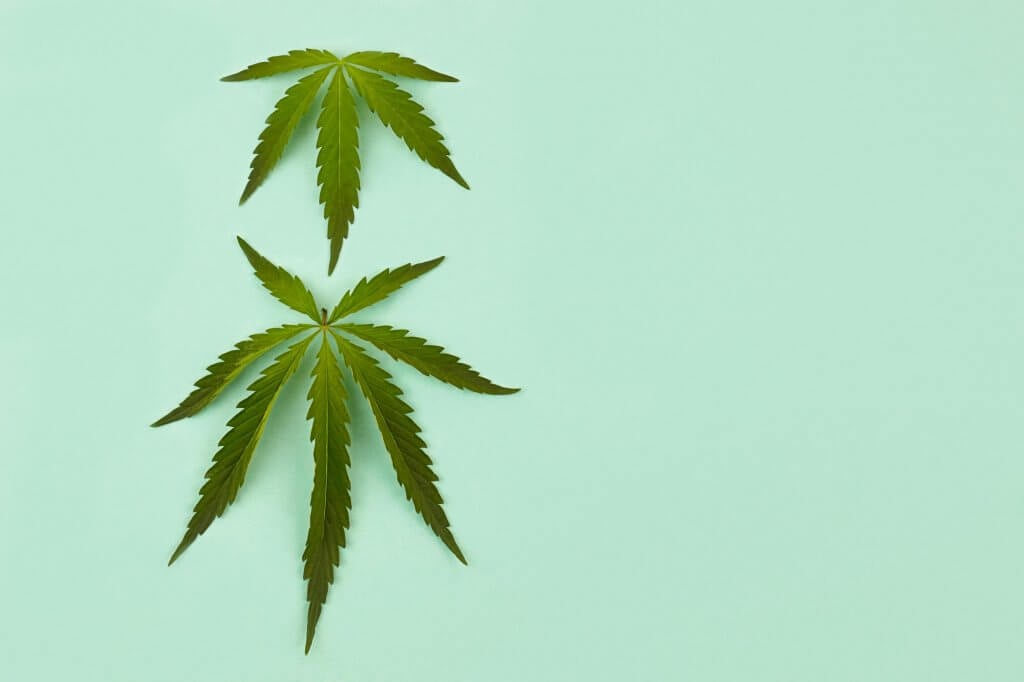
Weed leaves come in varying sizes, types and have different uses. The chlorophyll in them allows photosynthesis to take place, and therefore should be green. Shades of yellow or brown could be signs of cannabis nutrient burn or deficiency.
Cotyledons: These are the embryonic marijuana leaves that are first to appear when you grow weed. They're small and don't look like regular pot leaves. Cotyledon cannabis leaves curling up is a sign that you'll need to address any potential nutrient deficiencies.
Fan Leaves: The main marijuana leaves are called "fan leaves." They're large, bright green, and are essential to convert sunlight into usable energy. Unlike Cotyledons, you can identify the origin of the plant by looking at these.
Sugar Leaves: You'll find sugar leaves once female cannabis plants start creating colas. Sugar leaves are light green, small, and have sticky trichomes on them. Cultivators often remove them when they harvest to create a more aesthetic look.
While they all serve specific functions, fan leaves are vital to the survival of your plants. These large cannabis leaves are responsible for most sunlight conversion and shouldn't be trimmed willy-nilly.
Instead, marijuana cultivation experts recommend trimming a maximum of 20% of the fan leaves. Keeping 80% of the main leaves increases airflow without damaging productivity.
10 signs of sickness that marijuana leaves can show
Symptoms of sickness in marijuana leaves are very useful in identifying problems. If you didn't see any leaf problems, you wouldn't know there's an issue. While you might prefer not to see signs of disease, it's always best to prepare for the worst.
No matter how well you take care of your ganja, there's a possibility of developing deficiencies or diseases. Most cannabis deficiencies display browning or crispy weed leaves. Hopefully, our cannabis leaf chart can help you spot any issues before developing serious problems like windburn leaf spots.
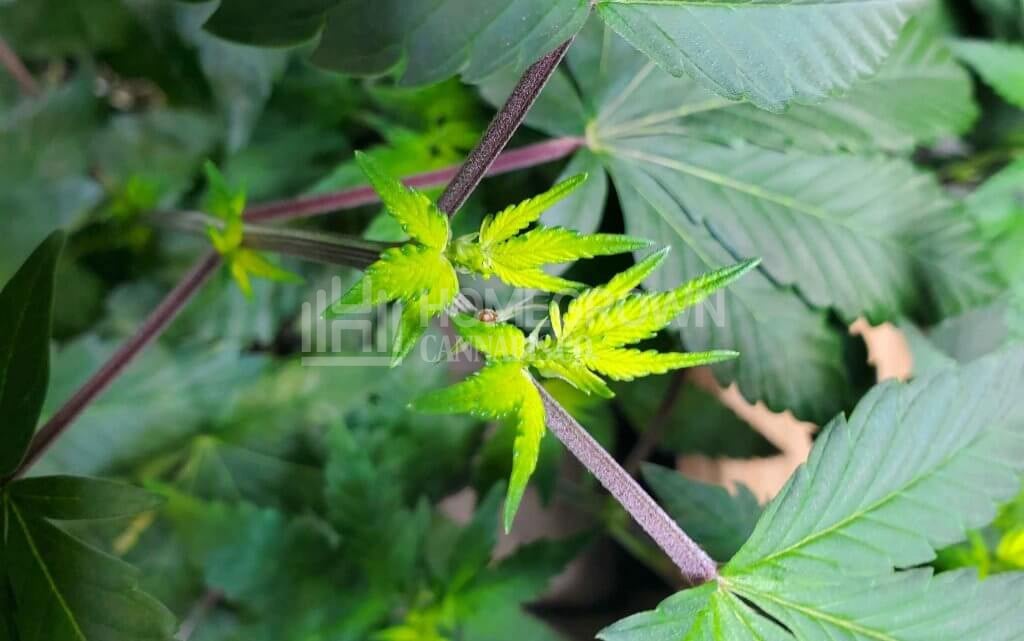
Cannabis leaf chart
| Symptoms | Nutrient Problem | Environment Problem | Feeding Problem | Long-Term Damage |
| Deformed and thickened at the tips | Boron Deficiency | Possible pH imbalance | Imbalanced Boron levels when feeding | It can cause severe limb deformation and death |
| Yellowing of veins start at the leaf tip, moving towards the base | Magnesium Deficiency | Overly acidic or alkaline soils | Over or under-feeding cal-mag | New growth is damaged, and yellow |
| Chlorosis in leaves starting at the base, going towards the tips | Sulfur Deficiency | Low sulfur content | Lack of sulfur in nutrients | The underside of leaves become pink and unable to photosynthesize |
| Leaf tips become brown and crispy | Zinc Deficiency | Incorrect pH balance | Providing too much or too little Zinc | Leaves die prematurely |
| New leaves are yellow | Iron Deficiency | pH imbalance or lack of iron | Disproportionate amounts of iron provided to plants | Wilting leaves |
| Red or pink coloring on leaves | Molybdenum Deficiency | pH imbalances | Overly acidic or alkaline soil | Dead branches or leaves |
| Consistently limp and droopy leaves | Silicon Deficiency | Low Silicon content | Not enough Silicon provided | Weak leaves and limbs |
| Rusty colored leaf tips | Potassium Deficiency | Low potassium content | Not enough potassium in feed | Leaves die and become black |
| Leaf edges turn dark green | Copper Deficiency | Imbalance of nutrients | Incorrect nutrient intake | Fewer branches, low yields |
| Yellowing of plant beginning at the base | Nitrogen Deficiency | Poorly composted soil or overly acidic medium | Improve nitrogen content | Weak Stems |
Cannabis deficiencies occur quite regularly and are often caused by incorrect pH levels in the growing medium. So first, check the pH levels to see if that's causing the problem in your weed leaves. If your pH level is wrong, you can flush your plants, introduce them to new soil, or give them pH balancing solutions.
The most common deficiencies that you see in cannabis leaves are very easy to avoid. First, ensure your feeding and watering cycles have the correct pH levels and make sure you use the correct nutrients. You can find organic nutrient packs that offer all the minerals your plants need, with instructions on correctly using them.
Can you smoke pot leaves?
So, if it's so great, is it possible to smoke a pot leaf? In short, yes. Can leaves get you high? Not very likely. Technically, you can smoke anything if you heat it enough, but that doesn't always mean you should. You can, however, sometimes smoke the sugar and fan leaves of weed plants.
Sugar leaves are usually around the buds and covered in a white layer of trichomes. They're often trimmed away and are smaller than all the other weed leaves. Sugar leaves have much higher THC and CBD levels than fan leaves but less than the flowers themselves.
Fan leaves have little to no THC in them, and you would require many of them to be affected in any way. For example, if you use pesticides or other chemicals on your cannabis leaves, you shouldn't smoke them. In addition, many consumers report headaches as a result of smoking compromised leaves.
While they don't have any THC in them, some cultures smoke cannabis leaves as an alternative to tobacco. This is because they contain no nicotine and aren’t addictive. An added benefit is that they still contain some CBD levels, even if it's very low.
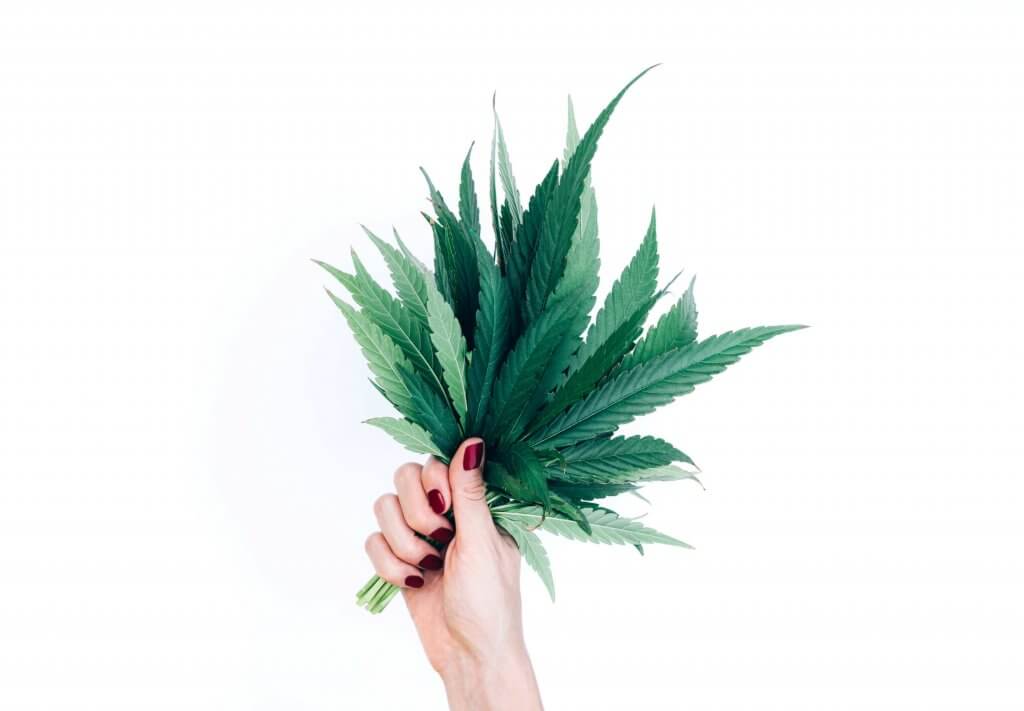
Alternative uses for cannabis leaves
If you're discarding your marijuana leaves after you harvest them, you might be wasting their uses. Depending on the type of leaf, you could be looking at multiple uses. So what are the different benefits of each weed leaf variant?
Fan leaves are often overlooked because they don't have much smoking utility. However, they're full of flavor and phytonutrients which support health and wellbeing. Adding raw cannabis leaves to your blender when you make a smoothie is a fantastic way to add various vitamins, omega fatty acids, proteins, and fiber into your diet.
Sugar leaves have higher cannabinoid levels, meaning they're good for butter, tea, or tonics. These pot leaves are often covered in sticky resin, which allows you to capture more of the flavor than in the fan leaves. In addition, you’ll often find CBD or THC oil made from sugar leaves with a strong terpene profile.
Composting cannabis leaves is another perfect way you can dispose of them. It lets you return lost nutrients to the soil in a very "circle-of-life " way. Microorganisms that live in compost also help aerate the soil and break down other organic waste, which helps prevent disease.
Finally, you can weave them. Weed leaves and stalks are the foundation of hemp products. If you have the right equipment or the correct hand technique, you can spin the fibers into a thread. With enough skill and understanding of the technique, you can essentially make hemp clothes right in your home.
Key Takeaways
As you can see, it's quite easy to identify marijuana leaves. While there are slight differences in appearance among the strains, their general look is consistent. You wouldn't confuse a weed leaf with a potato leaf.
Cannabis leaves also have many uses that don't always include smoking. Finding various uses for the fan and sugar leaves allows you to make the most of each plant you harvest. Not only could it save you money, but it also allows you to explore interests you might not have known you had otherwise.
Thanks to the internet, newbies, and veterans can search for pot leaf uses from the comfort of your home. Websites like the Homegrown Cannabis Co. blog offer new and experienced cultivators information on various strains, effects, and cannabis leaf uses.
FAQs
There are still many questions about marijuana leaves that are still unanswered. Unfortunately, the illegal nature of cannabis before the 21st century blocked a lot of research potential. Fortunately, biologists, doctors, and scientists are constantly researching marijuana, revealing information that never ceases to amaze us.
Can you get high from smoking weed leaf?
Depending on which weed leaves you smoke, you might get high. Fan leaves are very unlikely to induce a psychoactive effect because they have almost no THC in them. Sugar leaves are more likely to get you high because they have resin and trichomes which contain THC.
What does 3 leaf weed mean?
Most cannabis strains start with 3-bladed leaves when they're young. As they get older, the blades increase. A mature marijuana plant showing 3-bladed leaves is usually under environmental stress.
Does weed have 5 or 7 leaves?
Weed leaves come in various shapes and sizes. Some weed strains have five blades per leaf, and others have up to 13 blades per leaf. There's no guarantee of how many blades your marijuana leaves will have.
What causes deformed leaves?
Deformed pot leaves are every cultivators' worst nightmare. The most common causes for leaves to deform are nutrient deficiencies or pests. If you notice cannabis leaves curling up or becoming deformed, you should check your plant for pests and your medium's pH level.
To keep learning about weed leaves, check our PotCast:
So now that you know how to identify problems in weed leaves, head on over to Homegrown Cannabis Co. With 20 years of experience and a massive selection of high-quality seeds, you’ll be vibrating in your seat with excitement.
